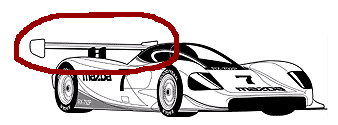Solar & Battery Fan DIY STEM Kit
$9.99$6.50
 Many cars, from drag racers to sports cars to monster trucks carry different kinds of spoilers on them. Some cars, like the Ferrari F1 cars, have them front and back; and since they are probably the most scientifically advanced wheeled transportation, I'll use them for the discussion.
Many cars, from drag racers to sports cars to monster trucks carry different kinds of spoilers on them. Some cars, like the Ferrari F1 cars, have them front and back; and since they are probably the most scientifically advanced wheeled transportation, I'll use them for the discussion.
 'The important thing is not to stop questioning. Curiosity has its own reason for existing. Never lose a holy curiosity.'
'The important thing is not to stop questioning. Curiosity has its own reason for existing. Never lose a holy curiosity.'